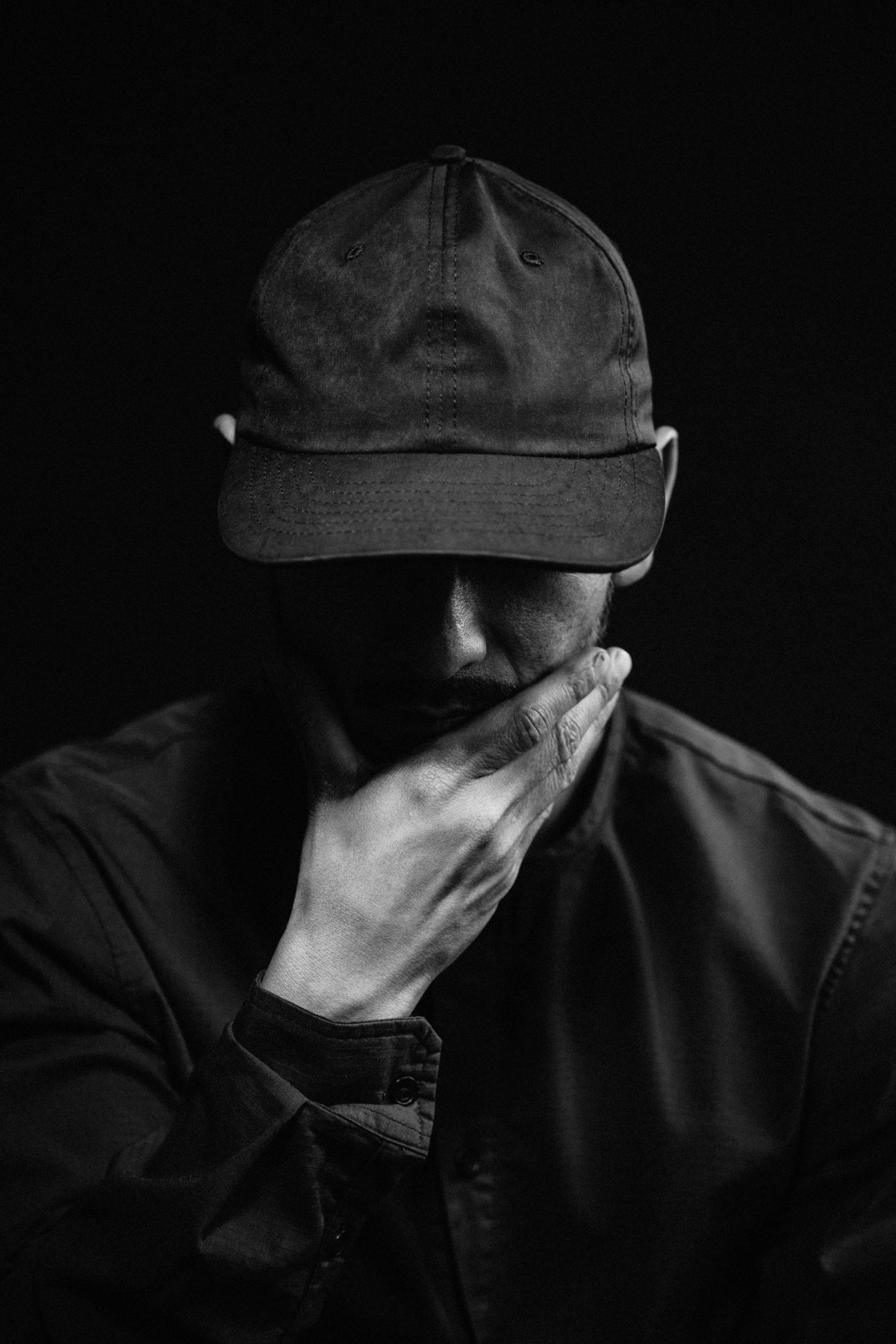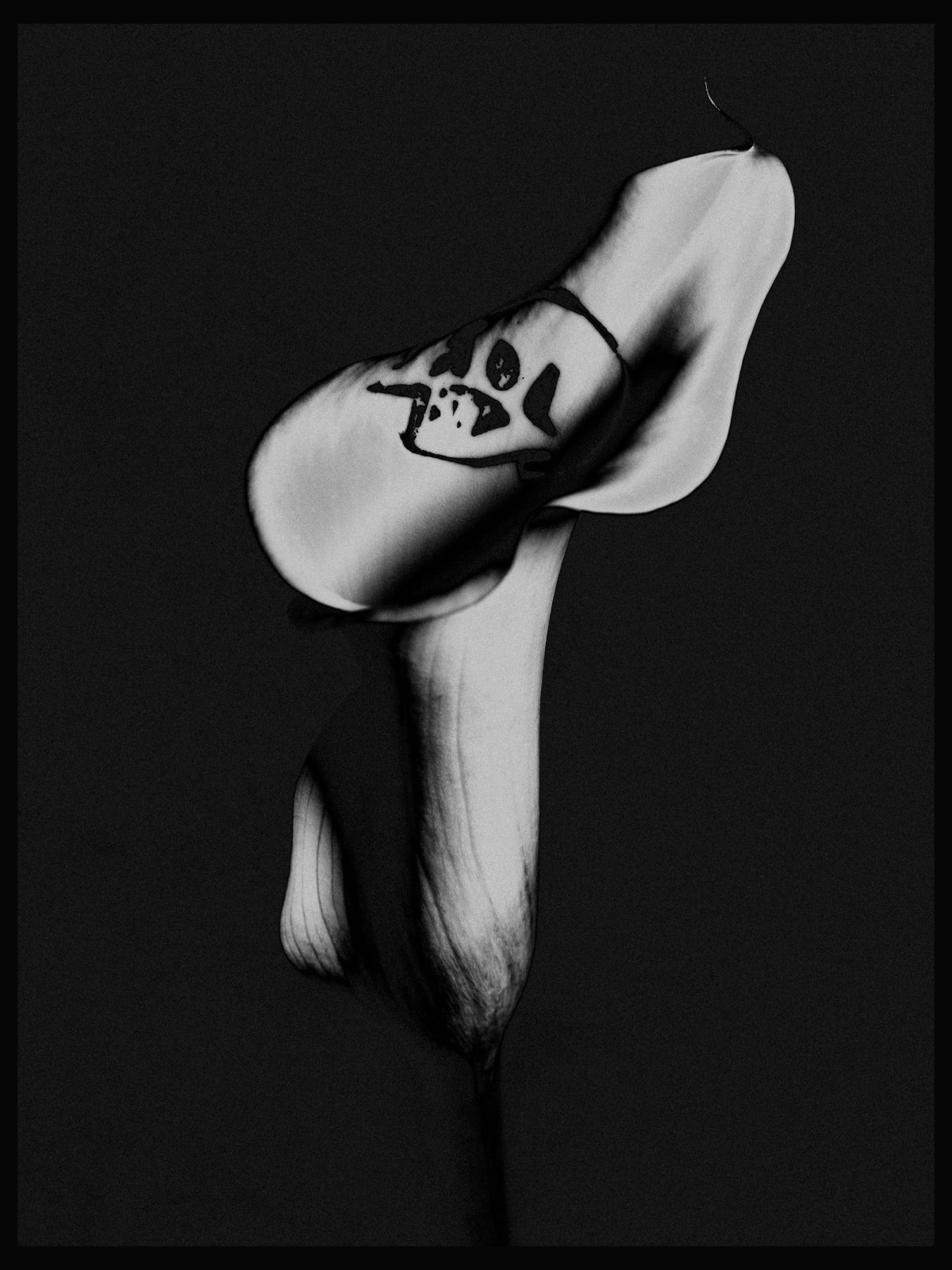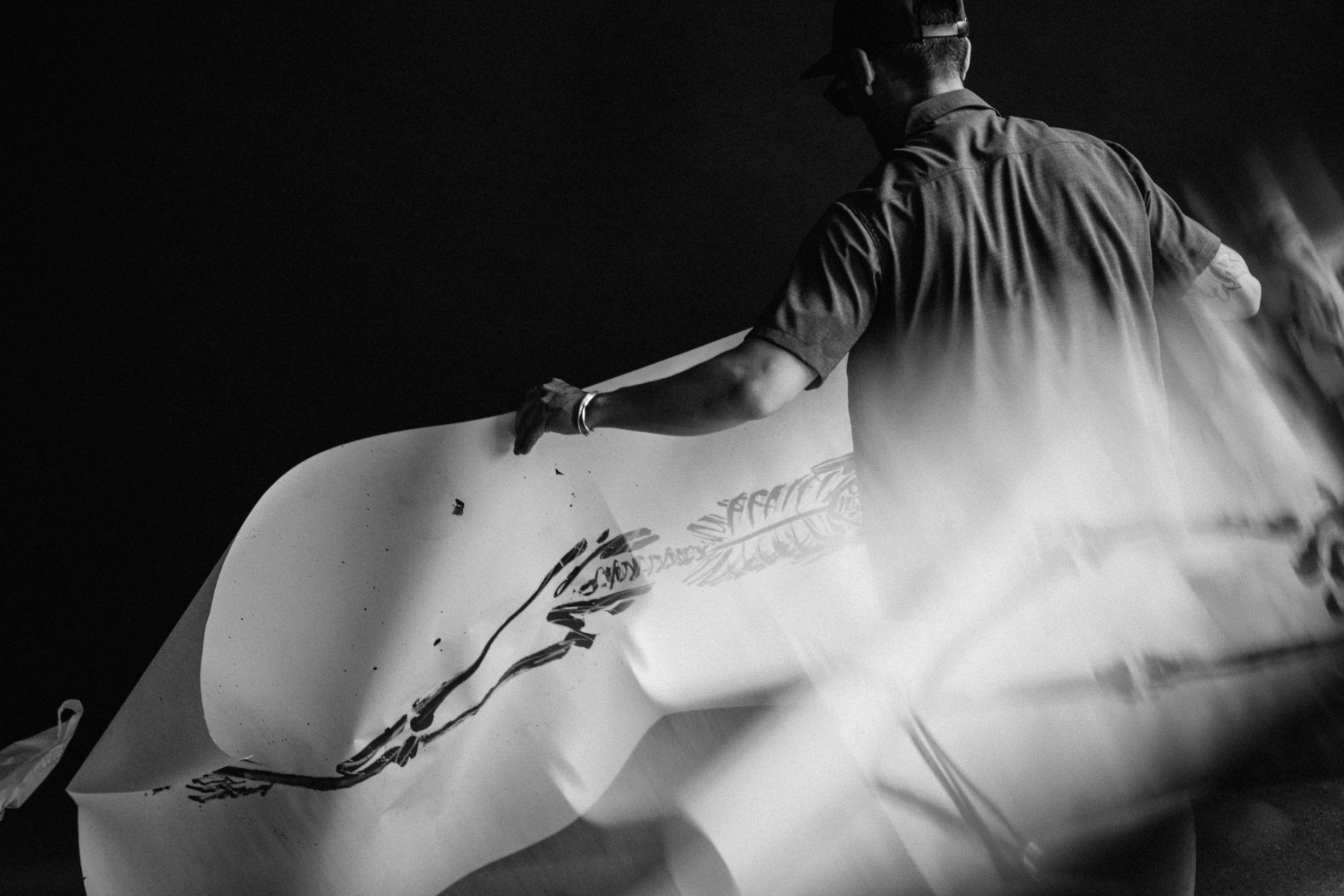
Journal
Dialogue: EKS.REI
In an art world largely lacking emotion, characterized by the dominance of corporate artists and postmodern intellectualism over raw human expression, EKS.REI delves back into the human psyche, pulling at personal strings to evoke a deeper common humanity. Born in Calgary, Alberta, EKS.REI is a self-taught artist that has displayed his work in Toronto, Montreal, and Vancouver. He is perhaps best known for his inky black sumi ink paintings of skeletons and nude women in various states, from abstract and figurative to libidinal. It's a treat to catch him in his process, painting with long, fluid, effortless strokes that are both calming and captivating. Swiss psychologist Carl Jung said that ‘in order to know the light, we must first experience the darkness’ and EKS.REI looks directly into the darkness, using minimal techniques to explore heady themes like existentialism, psychoanalysis, and eastern spirituality. Not restricting himself to a single medium, the artist has expanded his work to include charcoal and acrylic mediums, digital animation and even custom vases with Japanese ceramic maker Hasami. In hopes of shedding some light on the darkness, we caught up with EKS.REI on a recent visit to Toronto where we chatted about his process, inspirations and his unique approach to displaying his work.
Do you remember when you first created art? Or was it just something you always did?
From an early age I struggled with conventional means of communication, and have always relied heavily on using visual methods of expression. Making art became profoundly liberating for me.
Did you come from an artistic family or background?
There was an appreciation for arts and culture in our home growing up, but it was never encouraged as a profession or even a craft to dedicate time and energy to develop. I recall certain individuals present during my youth who lived with an aura of finesse and artistry - that had a significant influence on me.
In what way has your Vietnamese-Canadian identity influenced your work?
I inherited a strong sensibility toward spirituality and a respect for the superstitious as a by-product of my cultural upbringing. These elements remain prevalent throughout my work, often conveyed in the motifs, symbols and themes.
Who are your biggest artistic influences?
I’ve encountered and been influenced by many sets of values and artistic movements throughout my practice. I’ve been an admirer of so many individuals and artists that I owe my approach to – largely anyone with the integrity to work outside of, or challenge traditional systems.
What influences you outside of art?
I have a deep reverence for nature and find myself consistently inspired by the mystery of the natural world.
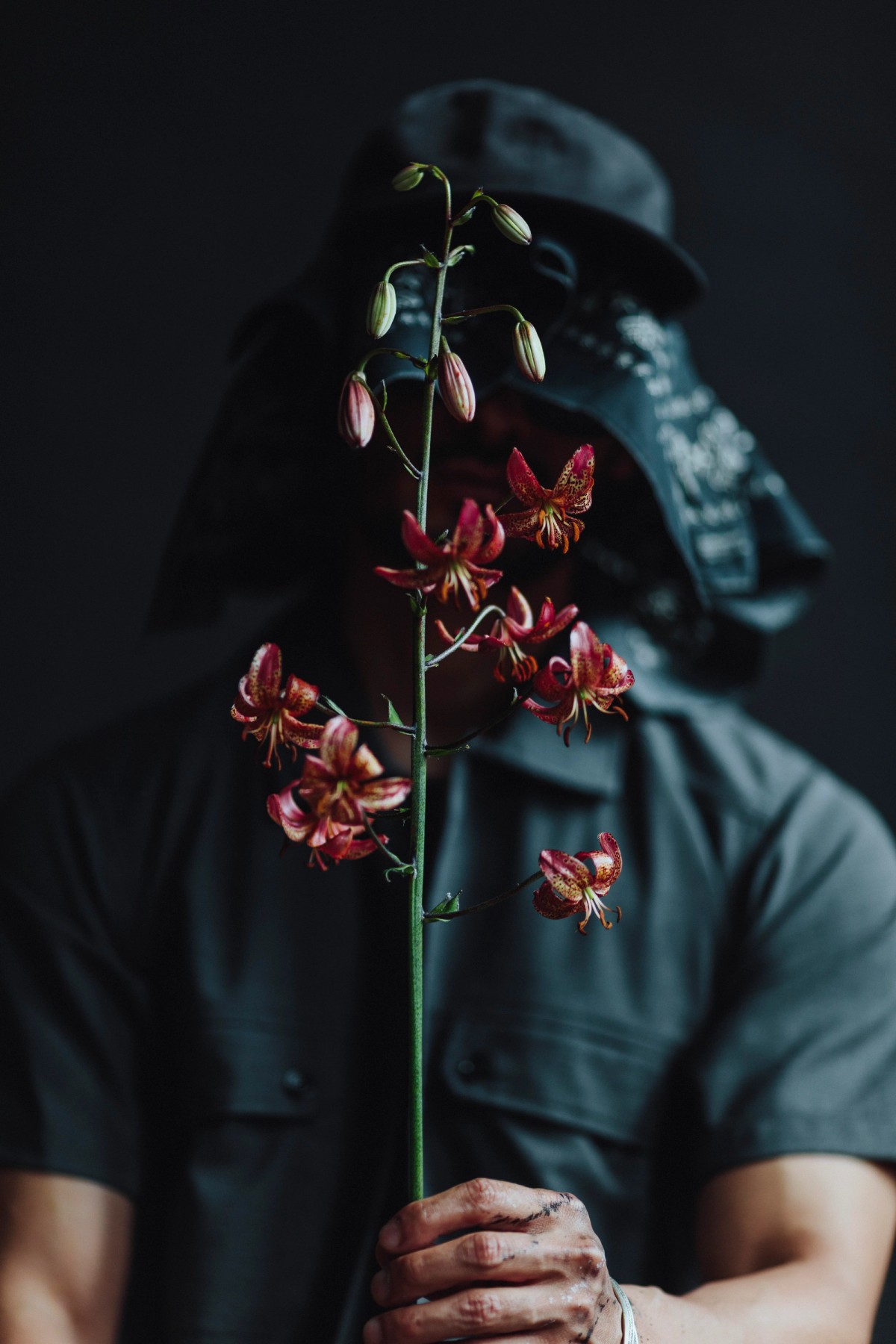

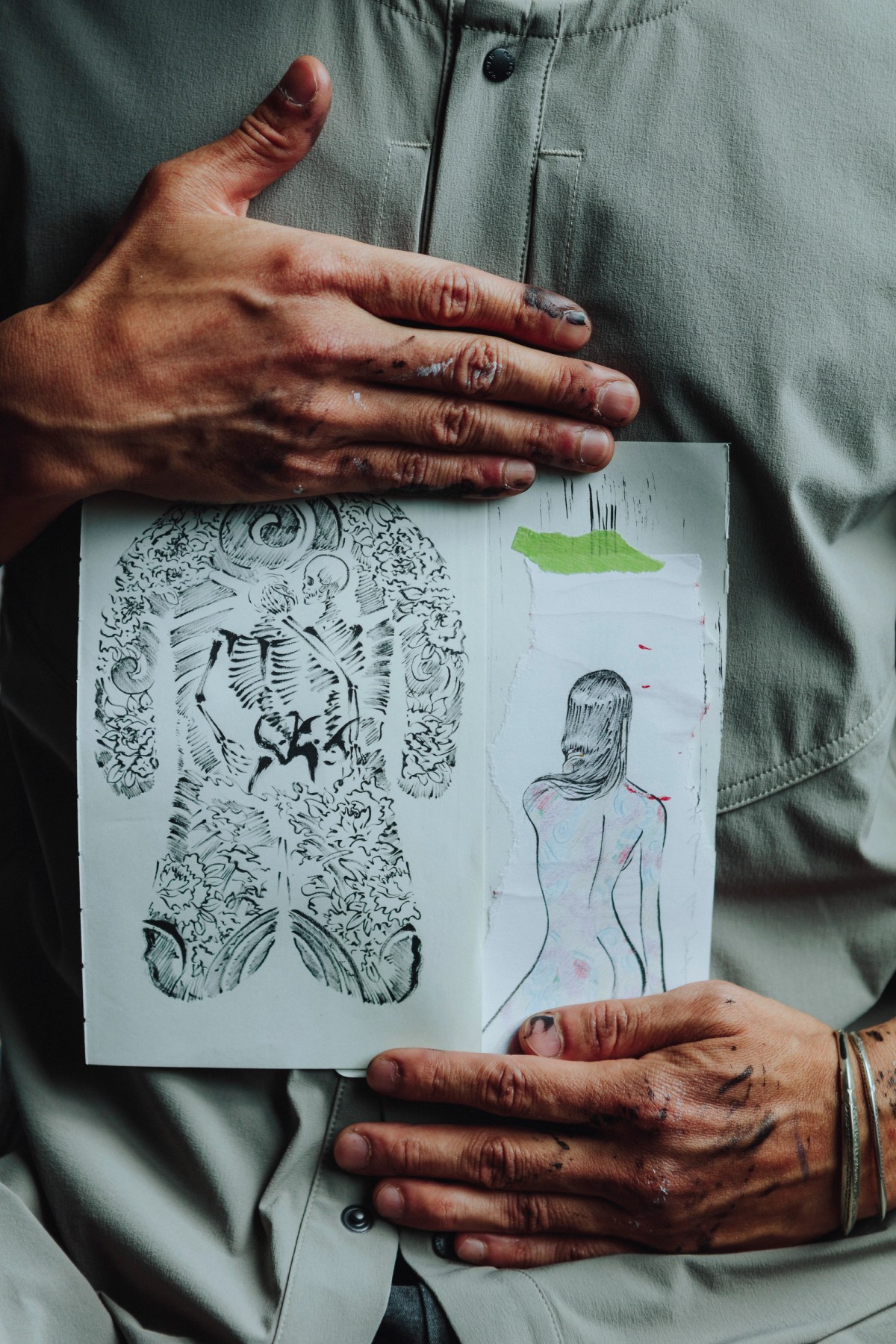


In western culture, the rhythm of death as a significant part of life is rarely acknowledged – we go to great lengths to deny its presence and its value. In embracing death, I believe we transcend it.
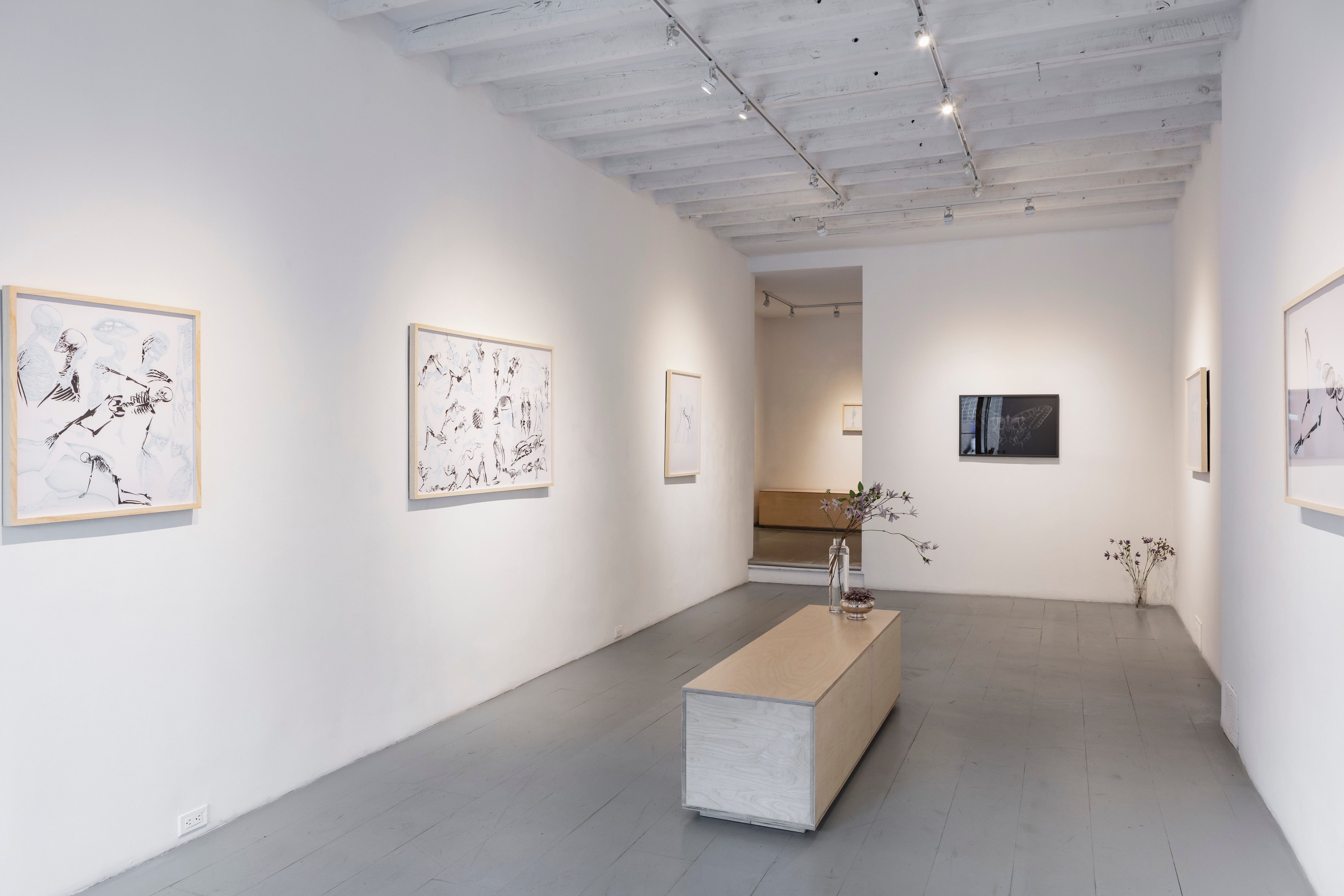

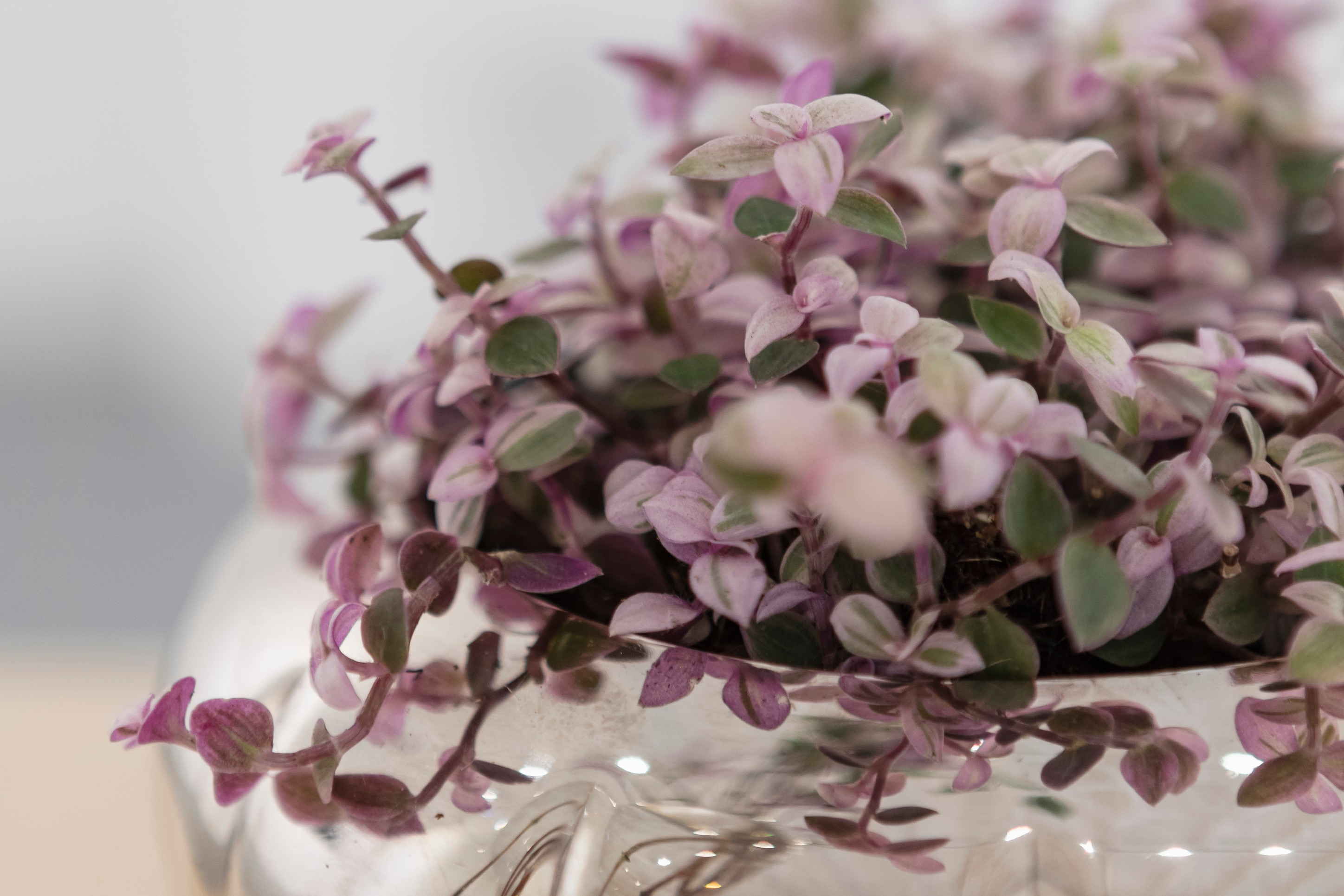
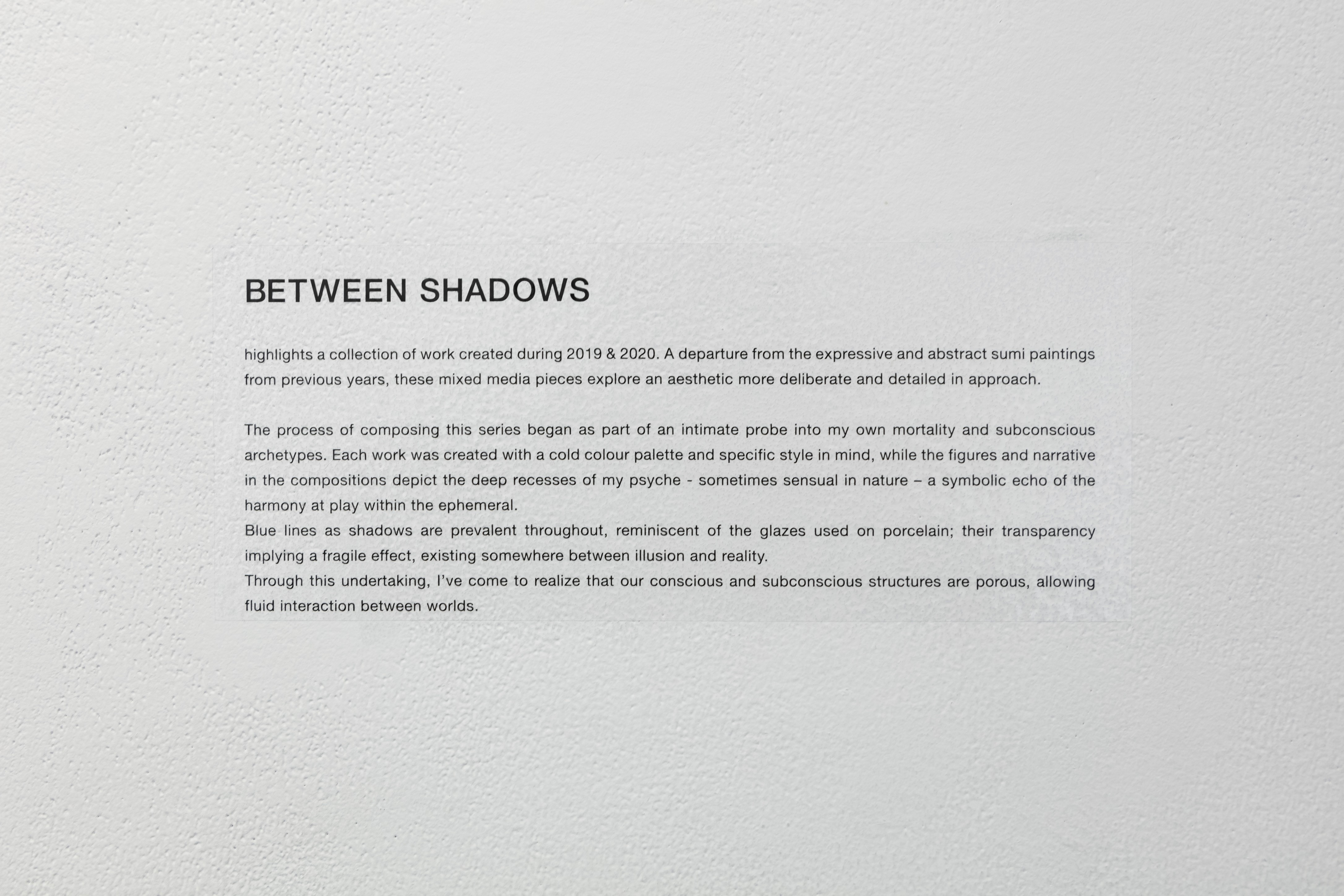

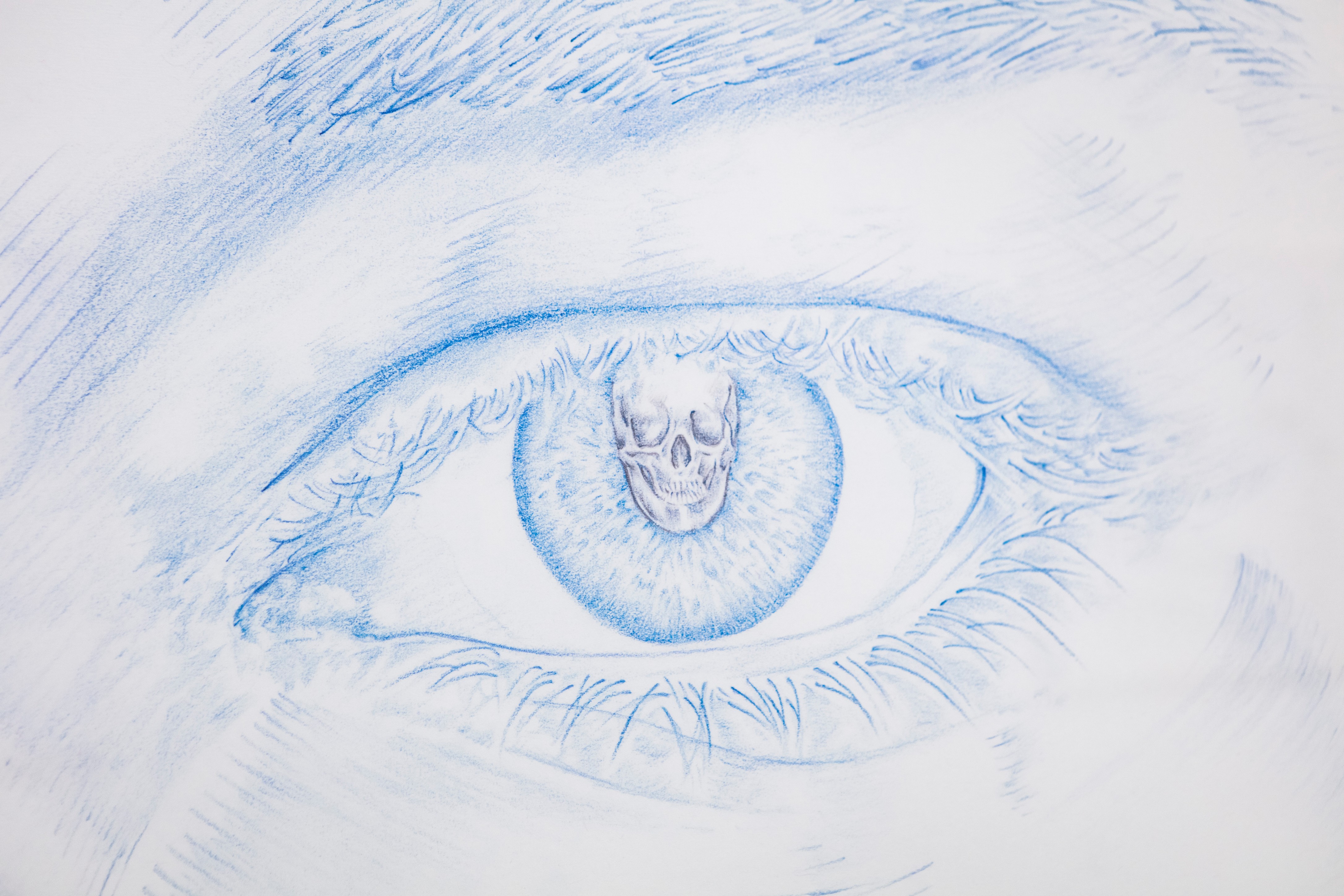
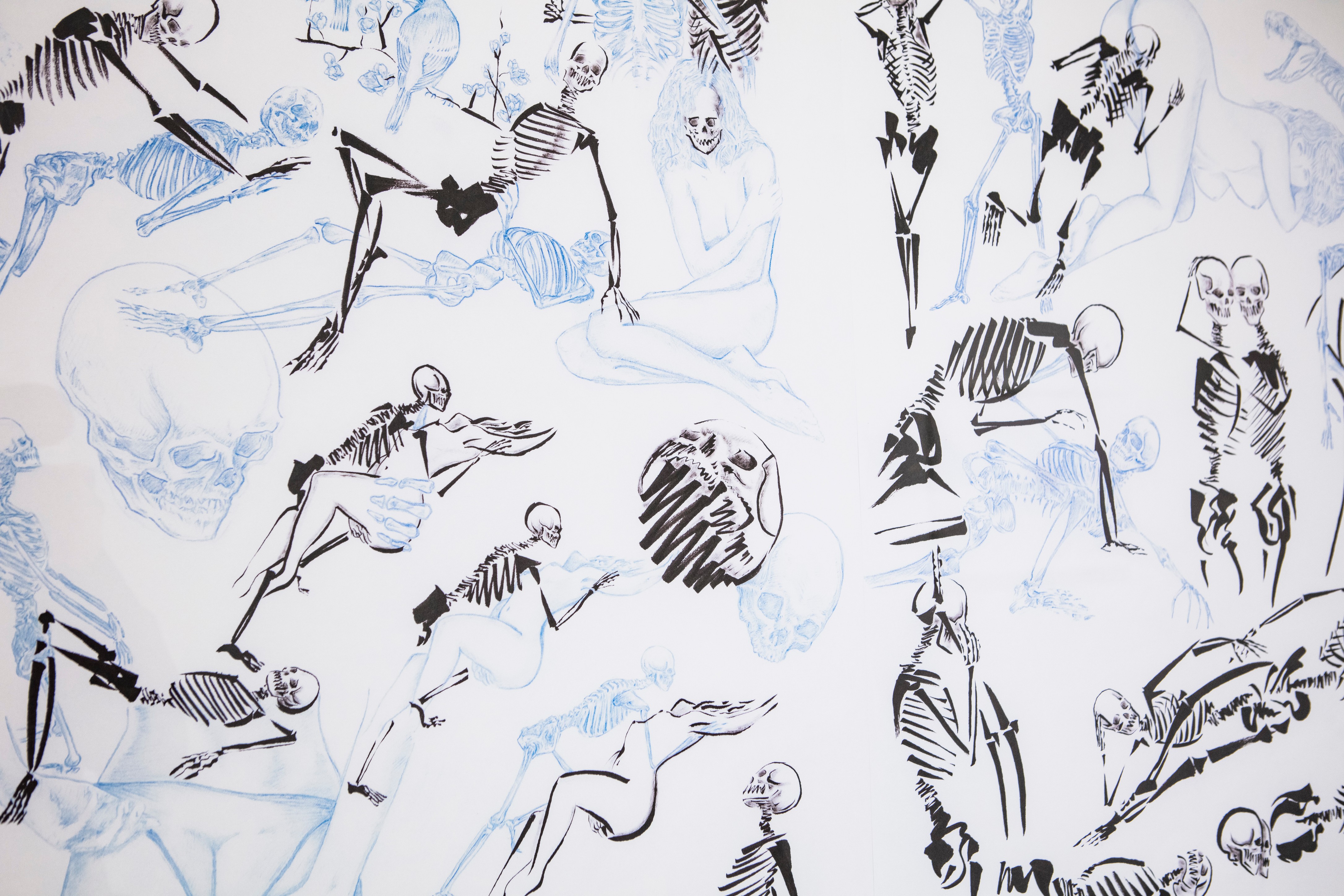
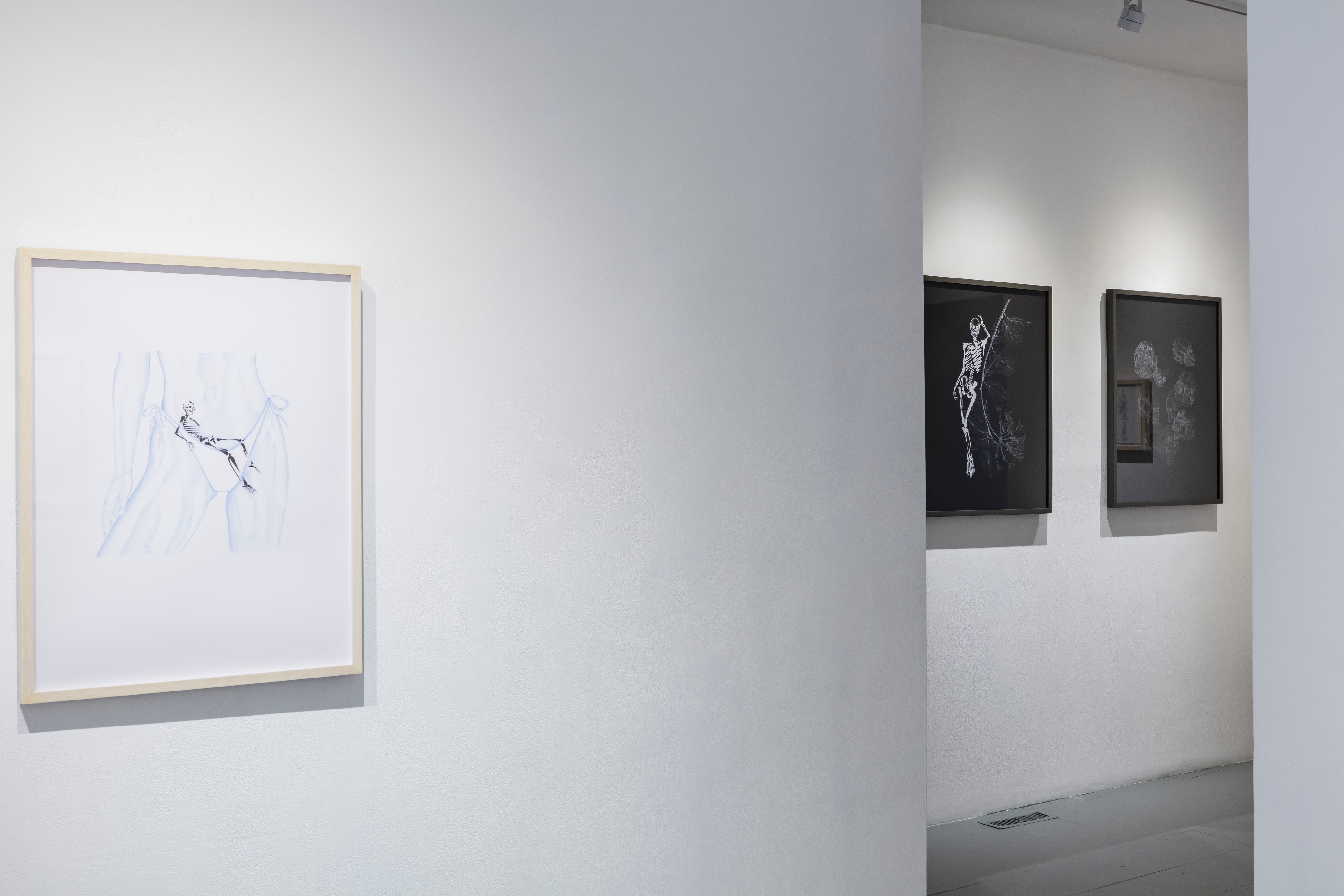
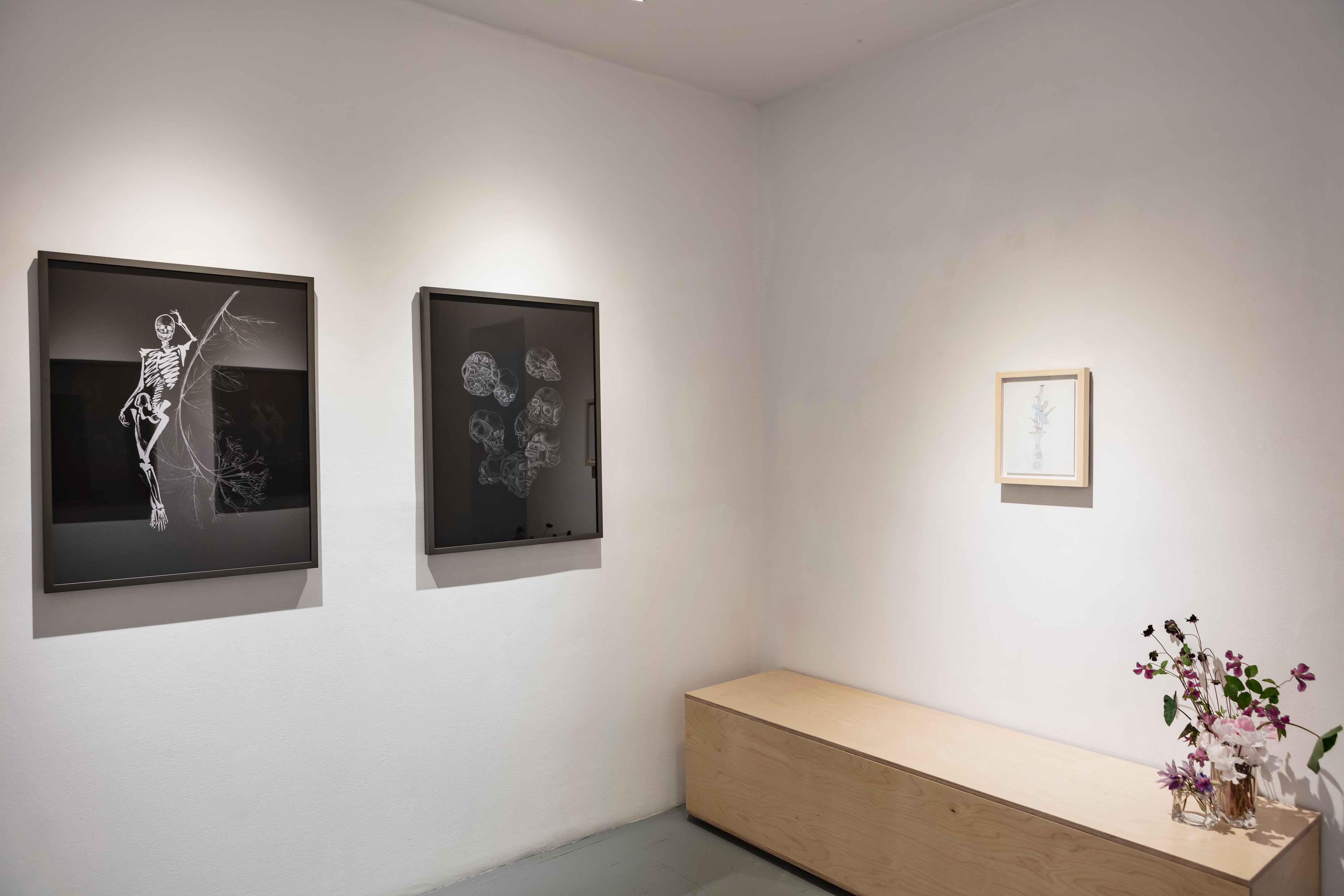
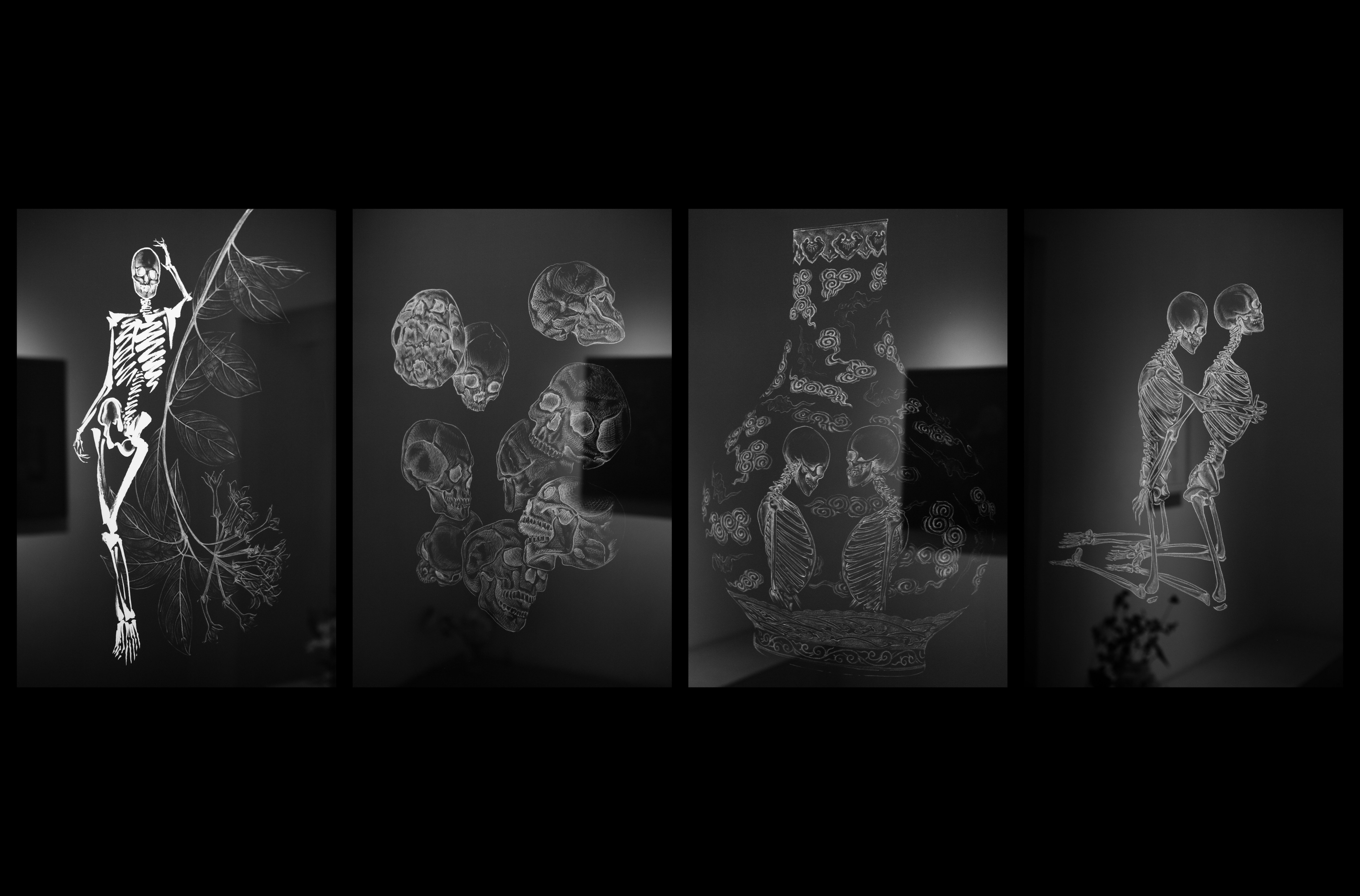

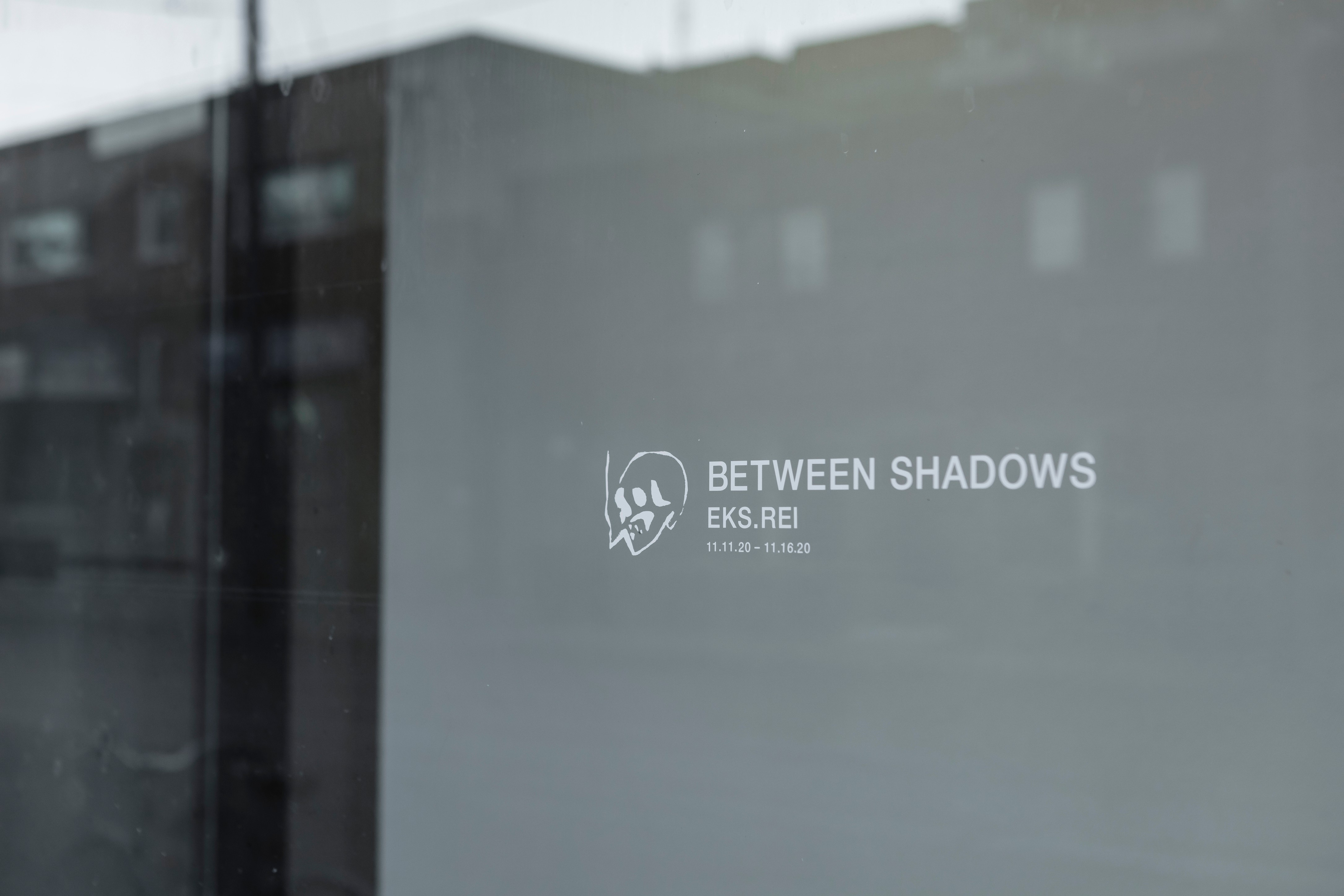
The most apparent continuous theme in your work is the appearance of skulls and skeletons and even your nom de guerre makes reference to this. Why is this?
In western culture, the rhythm of death as a significant part of life is rarely acknowledged – we go to great lengths to deny its presence and its value. In embracing death, I believe we transcend it.
In your show ‘Between Shadows’ you said you “realize that our conscious and subconscious structures are porous”. What do you mean by this?
The work in Between Shadows explores the polarities within my own dualities, and contemplates the illusion of separateness encountered in our waking and dreaming states.
Strip us down to our most basic frame, free of circumstance, beliefs and any visual identifiers – we find what connects us is more relevant than anything that can divide us.
Even though on the surface your work is characterized by dark elements like skeletons, theres also a raw humanity and if not joy, an appreciation of the simpler things in life …sex, drinking, smoking. Are you trying to tap into some kind of collective unconscious?
Ultimately, the work I make can be interpreted as an attempt at documenting the process of unraveling my own inherent truths – a practice in self-discovery. Strip us down to our most basic frame, free of circumstance, beliefs and any visual identifiers – we find what connects us is more relevant than anything that can divide us.
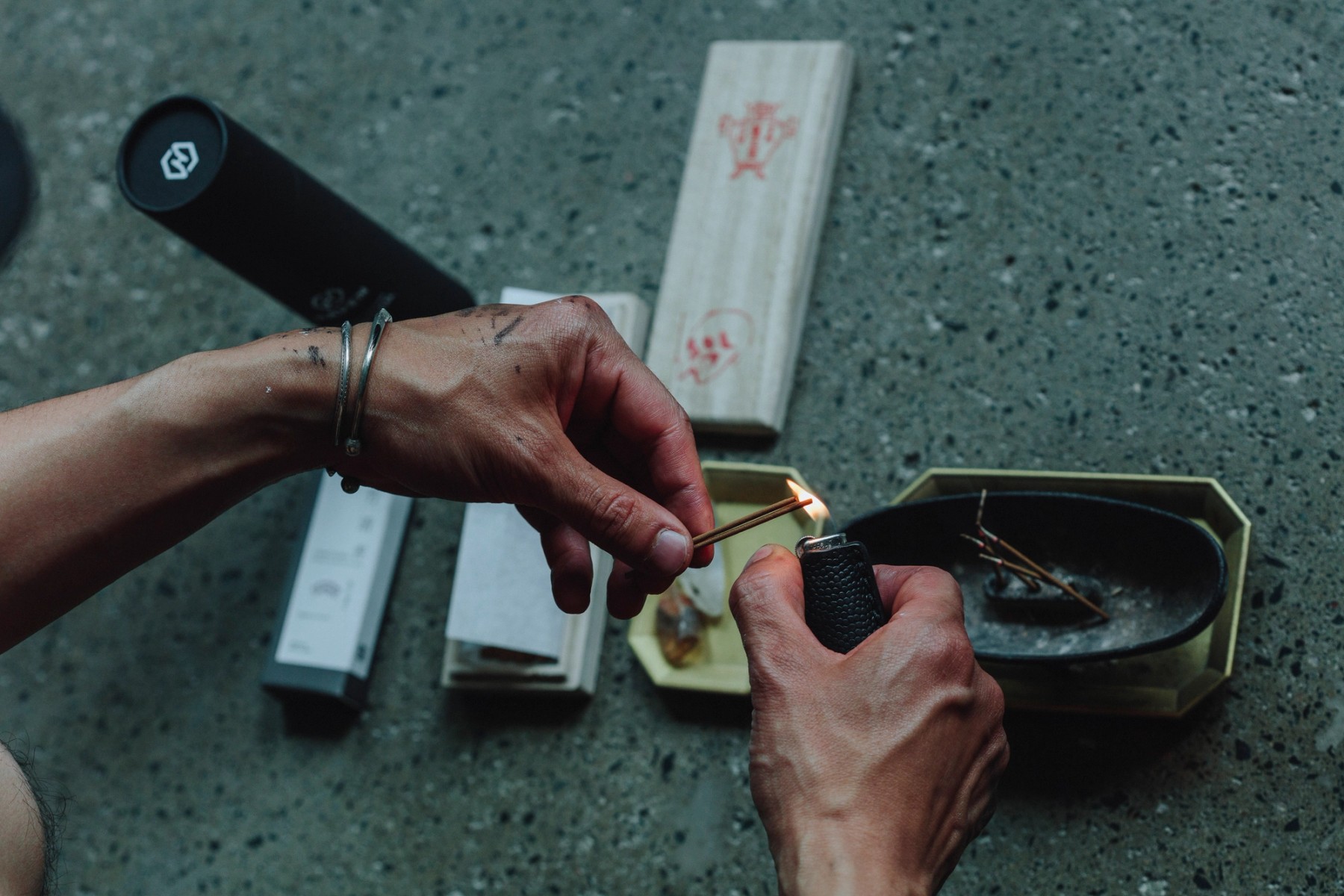
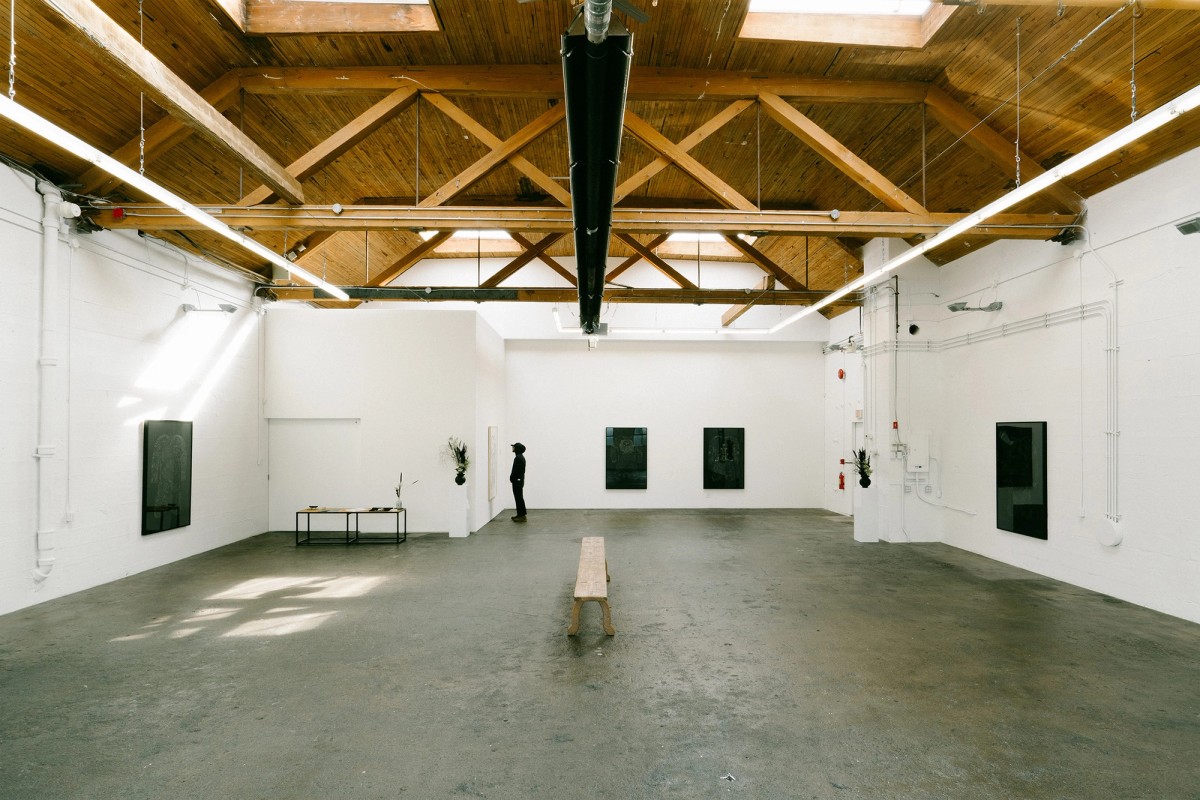
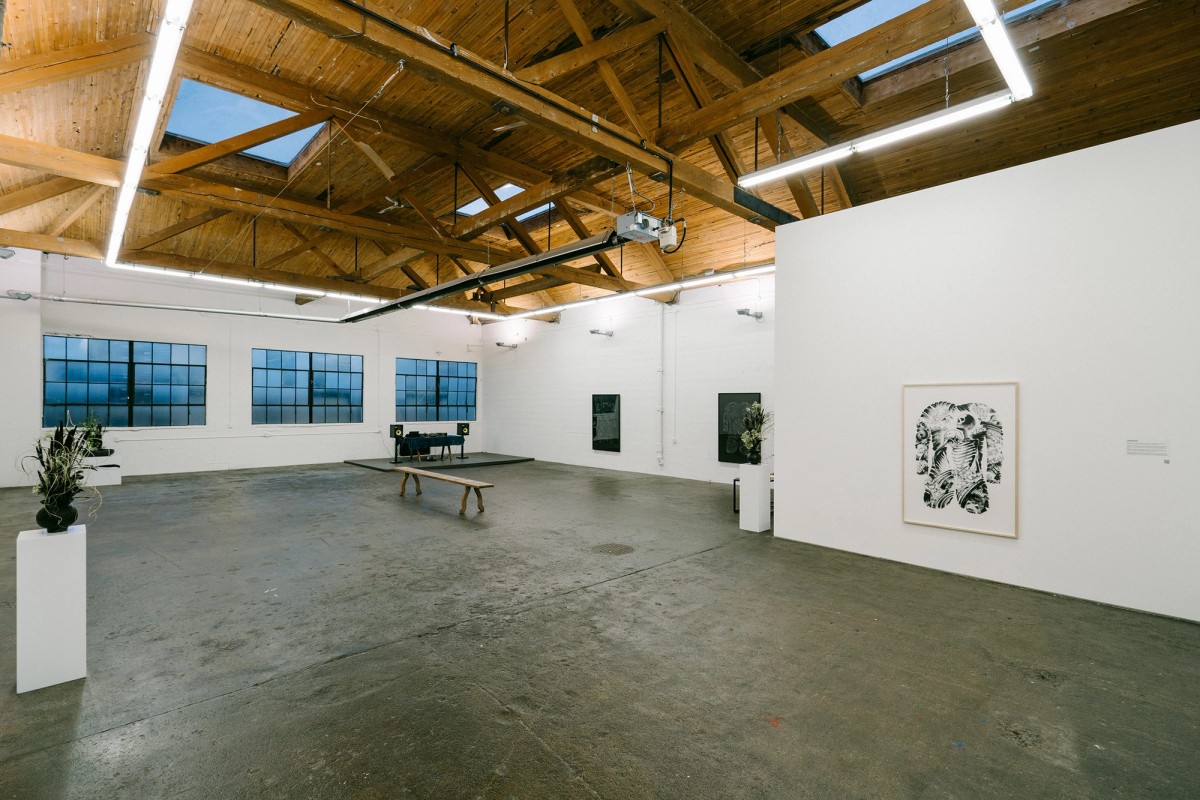
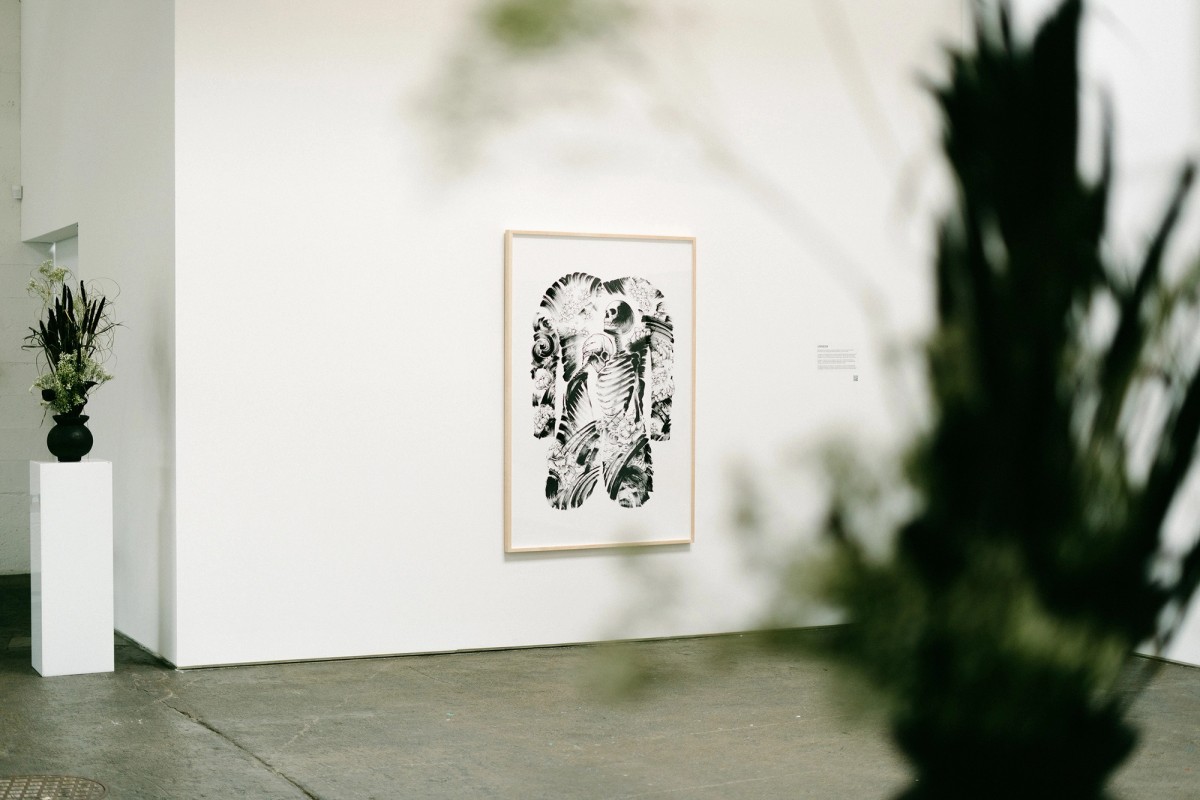

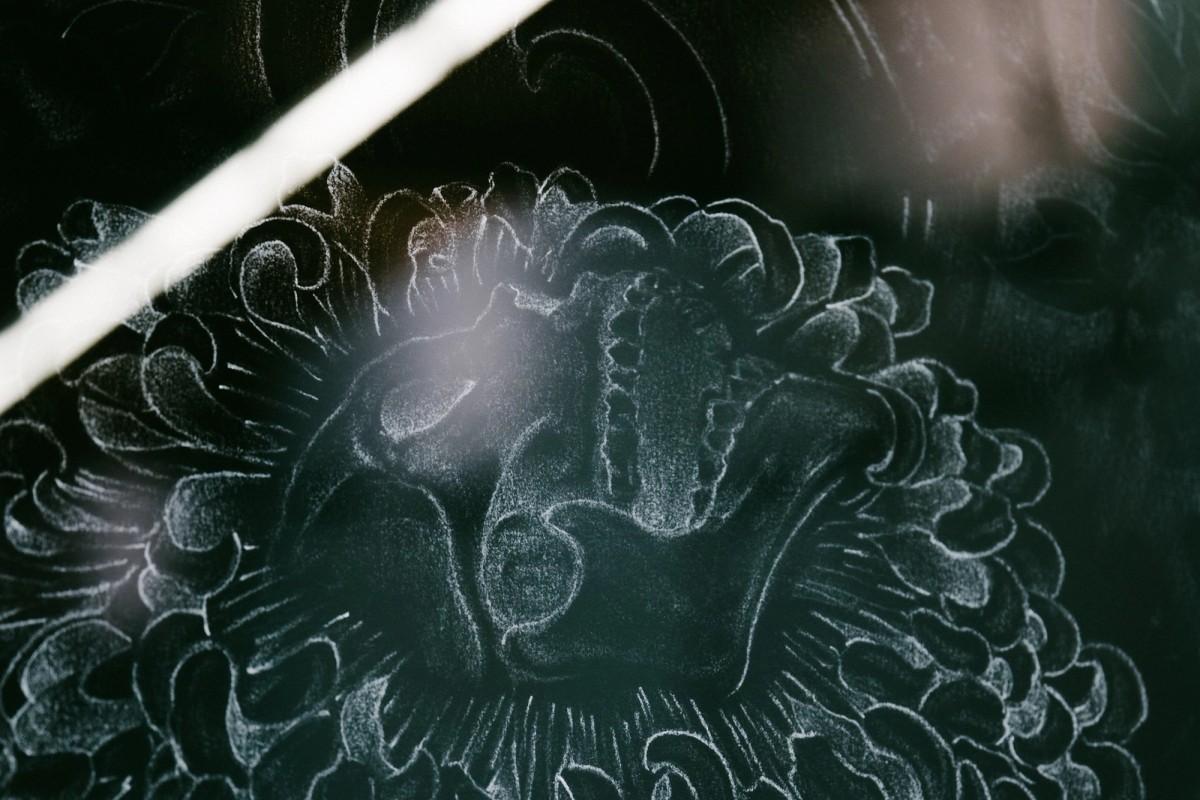


What role does spirituality play in your work? Do you consider yourself a religious or spiritual person?
Spirituality, psychology and philosophy are enduring pillars which support the visual language I’m exploring. Together they serve as the foundation or principles which help me navigate my role as an advocate for self actualization.
Your work often references Carl Jung and his conceptions of death. What do you find compelling about his philosophy?
I resonate most with Carl Jung’s work in relation to the psyche, his insights on dream analysis and what he understood to be “the shadow self” - the repressed darkside which exists in all of us. One of my favorite quotes by Jung is - “who looks outward dreams, who looks inward awakes”.
Is there a particular emotional response you hope your work evokes in an audience?
I view this work as a dialogue or bridge between what we perceive through our basic senses and what lies beneath our immediate awareness. I hope to challenge my audience to confront their own shadows and consider the roles the unconscious and conscious minds play in their lives.
Do you imagine the figures in your work contemplating anything in particular?
I’ve come to understand these figures as their own script in an abstract visual language or hieroglyphs.

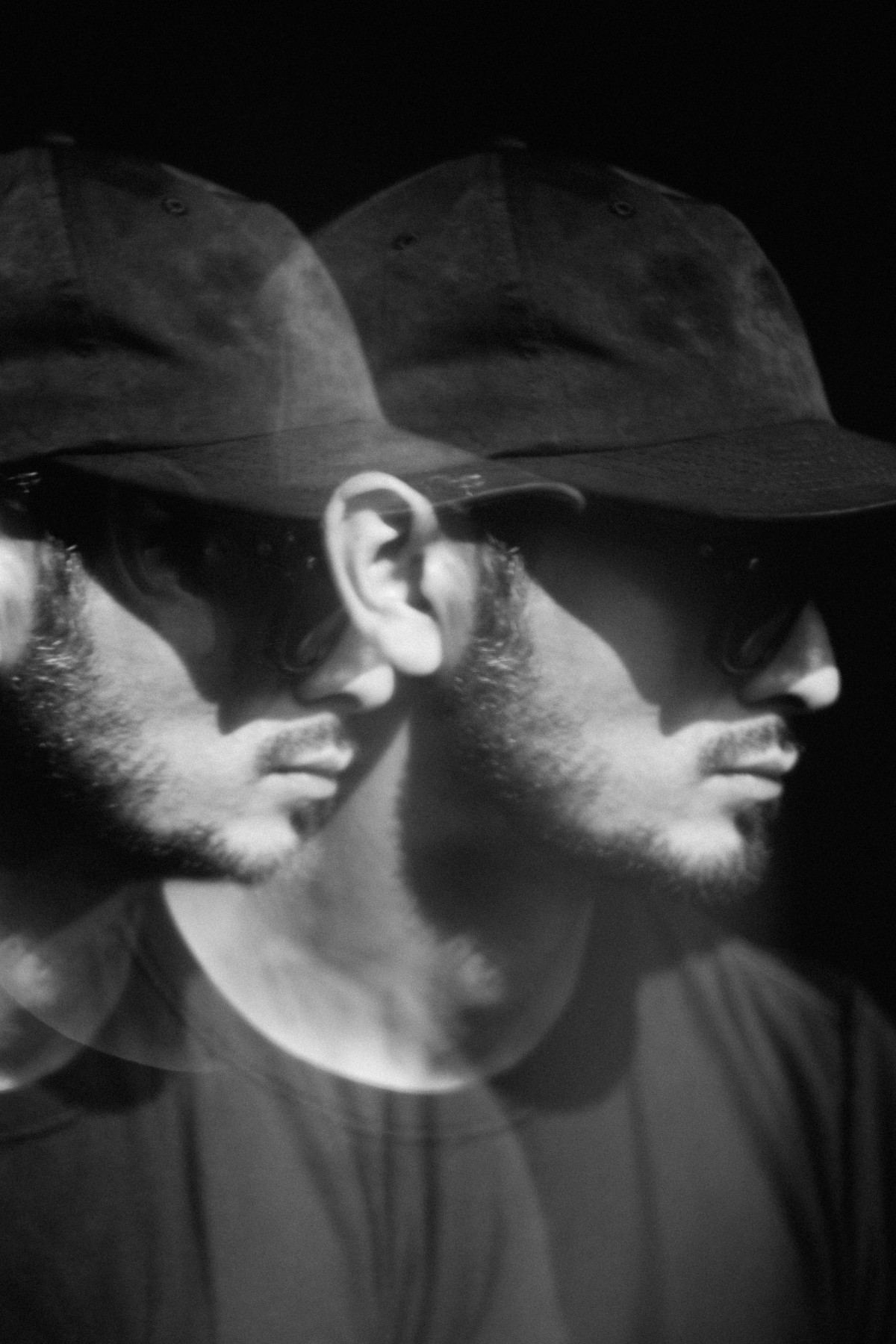
Sumi ink has a distinct way of capturing the gestures and movement of a brush stroke in the moment, preserving its energy even when cured.
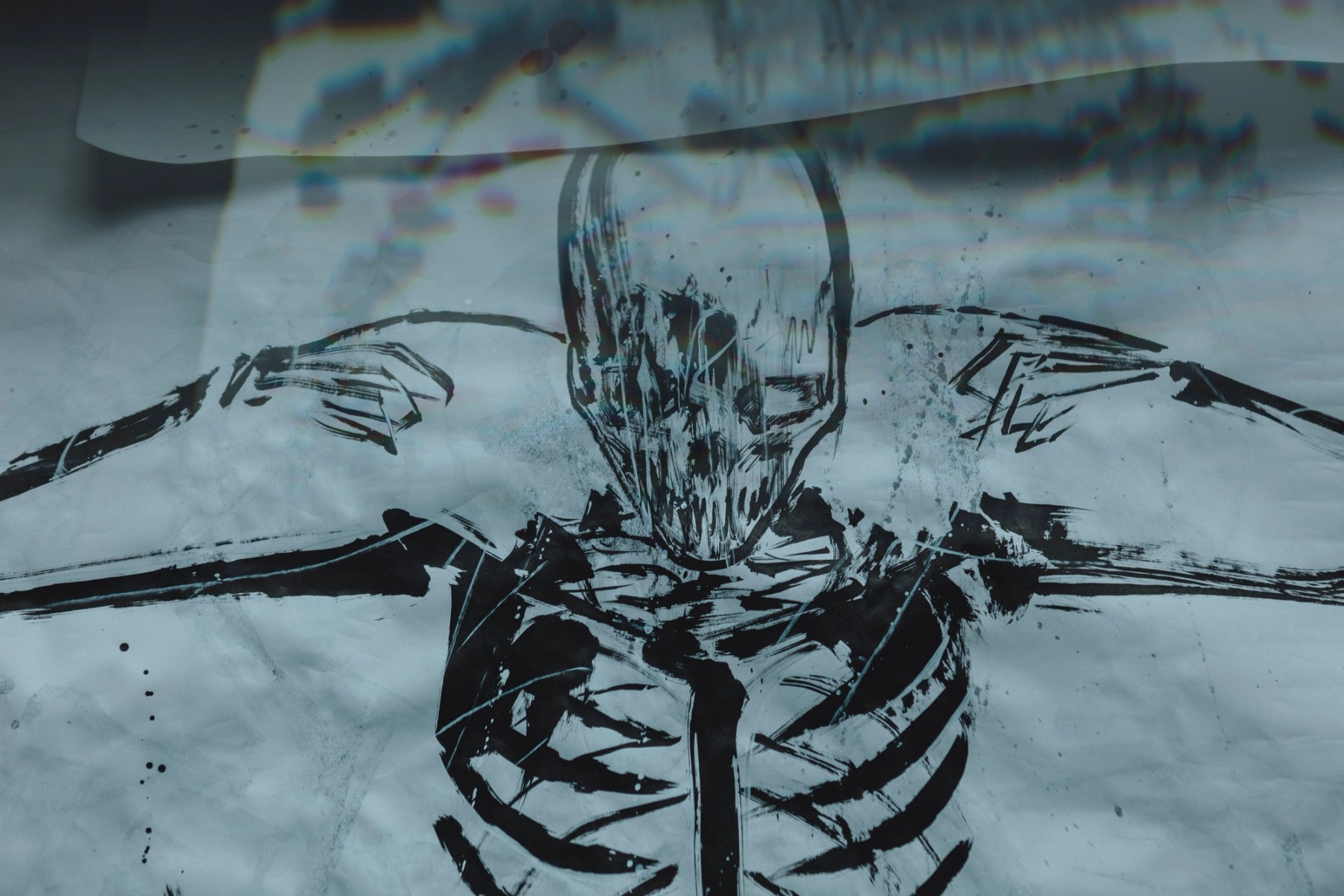
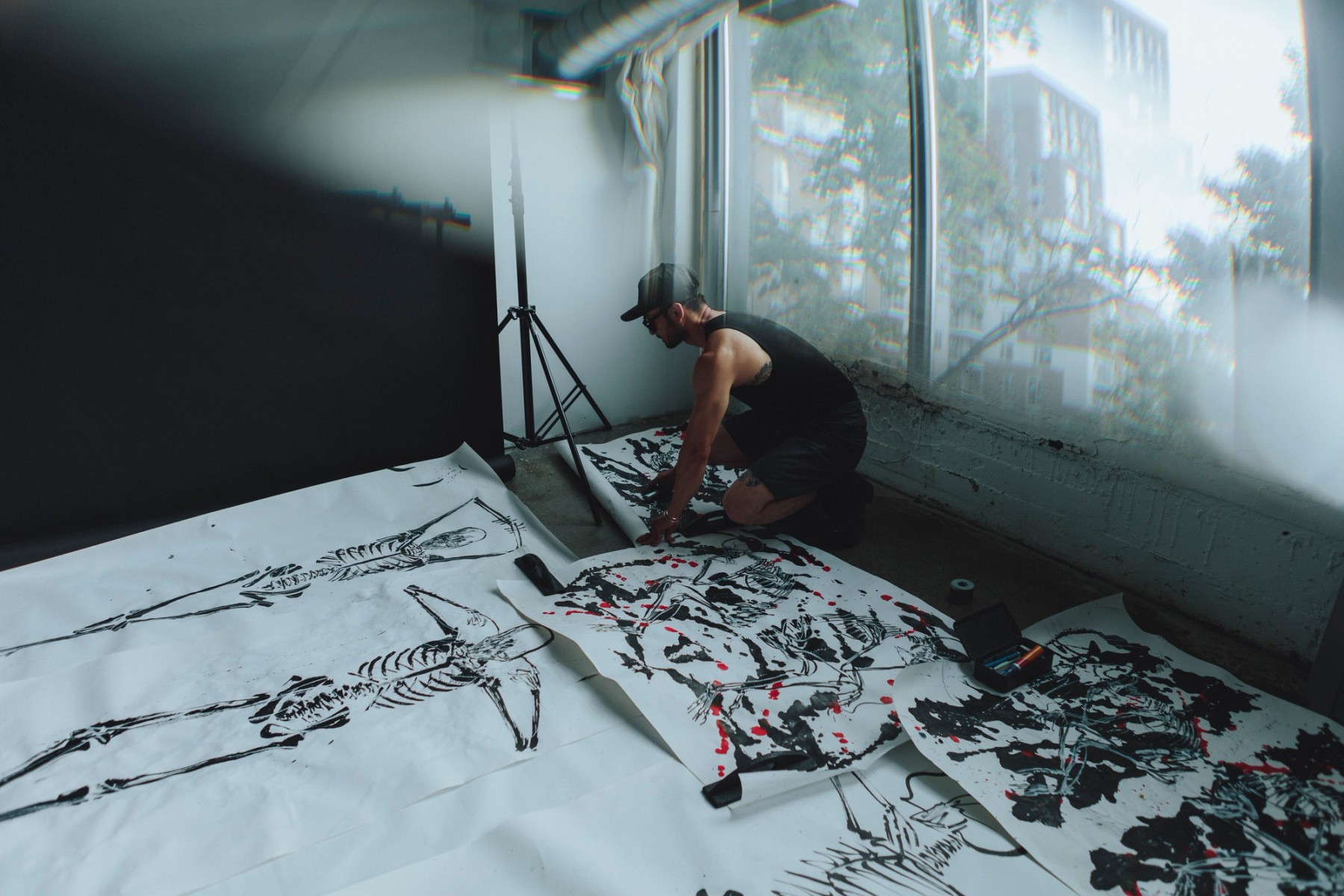
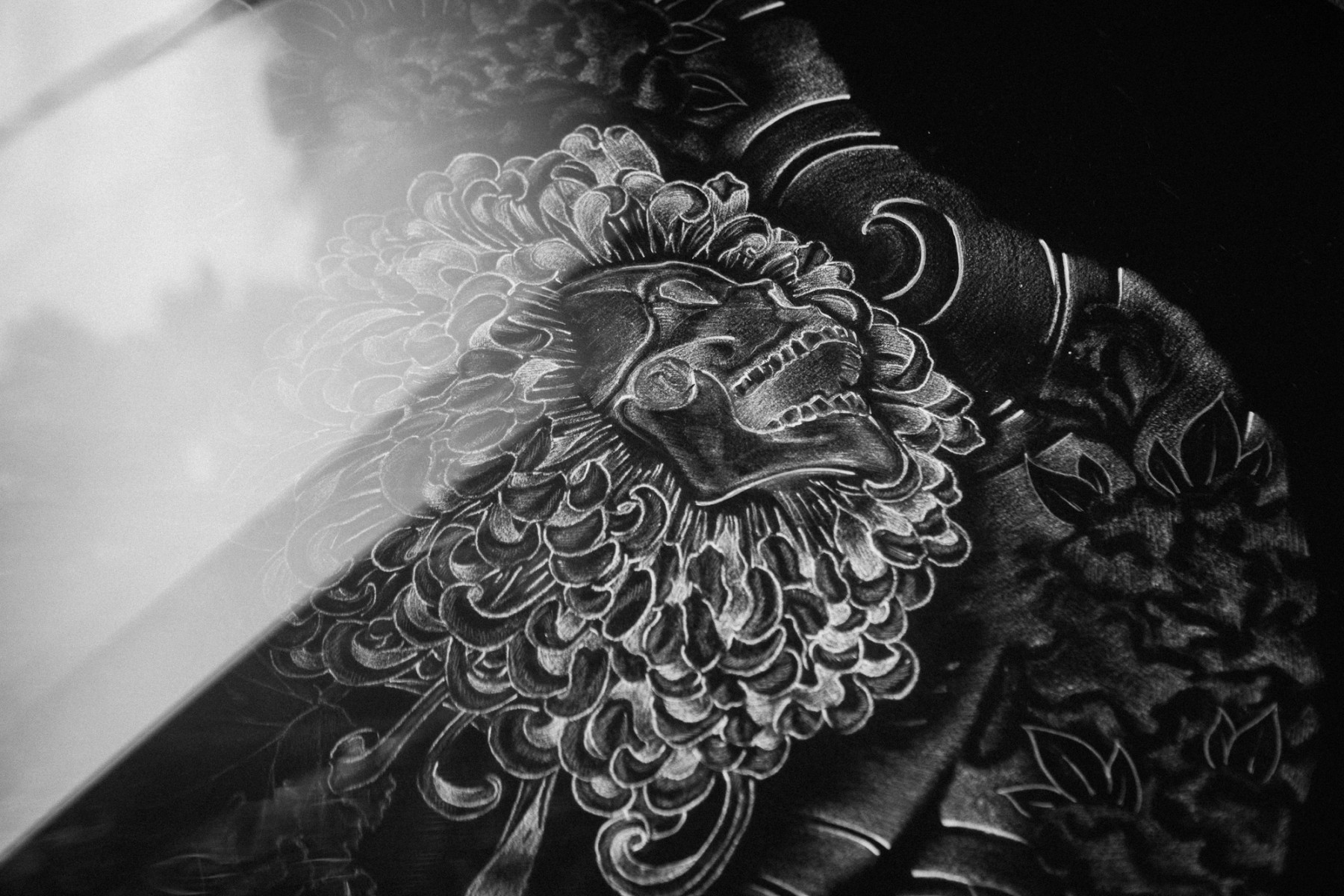


Sumi ink has been the major medium in your work, why did you choose to work with it?
Sumi ink has a distinct way of capturing the gestures and movement of a brush stroke in the moment, preserving its energy even when cured. The way sumi ink integrates to a paper’s surface is predictable, encouraging confidence with the speed in which I can translate an abstract idea into visual language. Working in this medium, I’ve learned to adopt a minimalist approach to my compositions, while still allowing spontaneous and freestyle forms of expression.
Floral motifs are common in your work and you have worked with Toronto-based ikebana artist Reiko Machiyama (@momentsbyreiko). What do flowers represent in your work and practice?
My fascination with flora derives in part from the way in which they embody the tension between the beauty and the impermanence of life. Ikebana arrangements illustrate the parallels among nature and emotion - which I use to complement the grim or evocative imagery in some of my work.
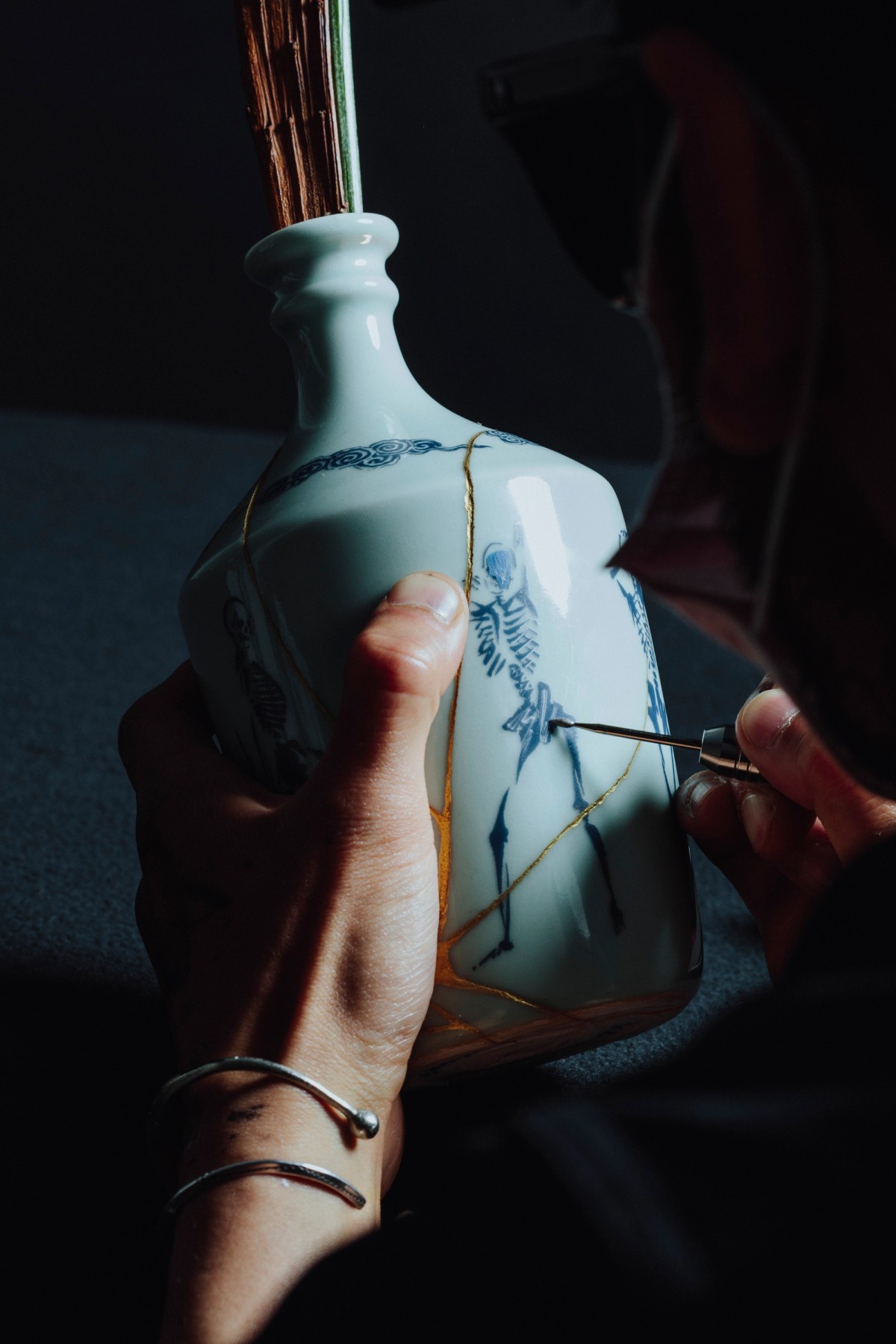
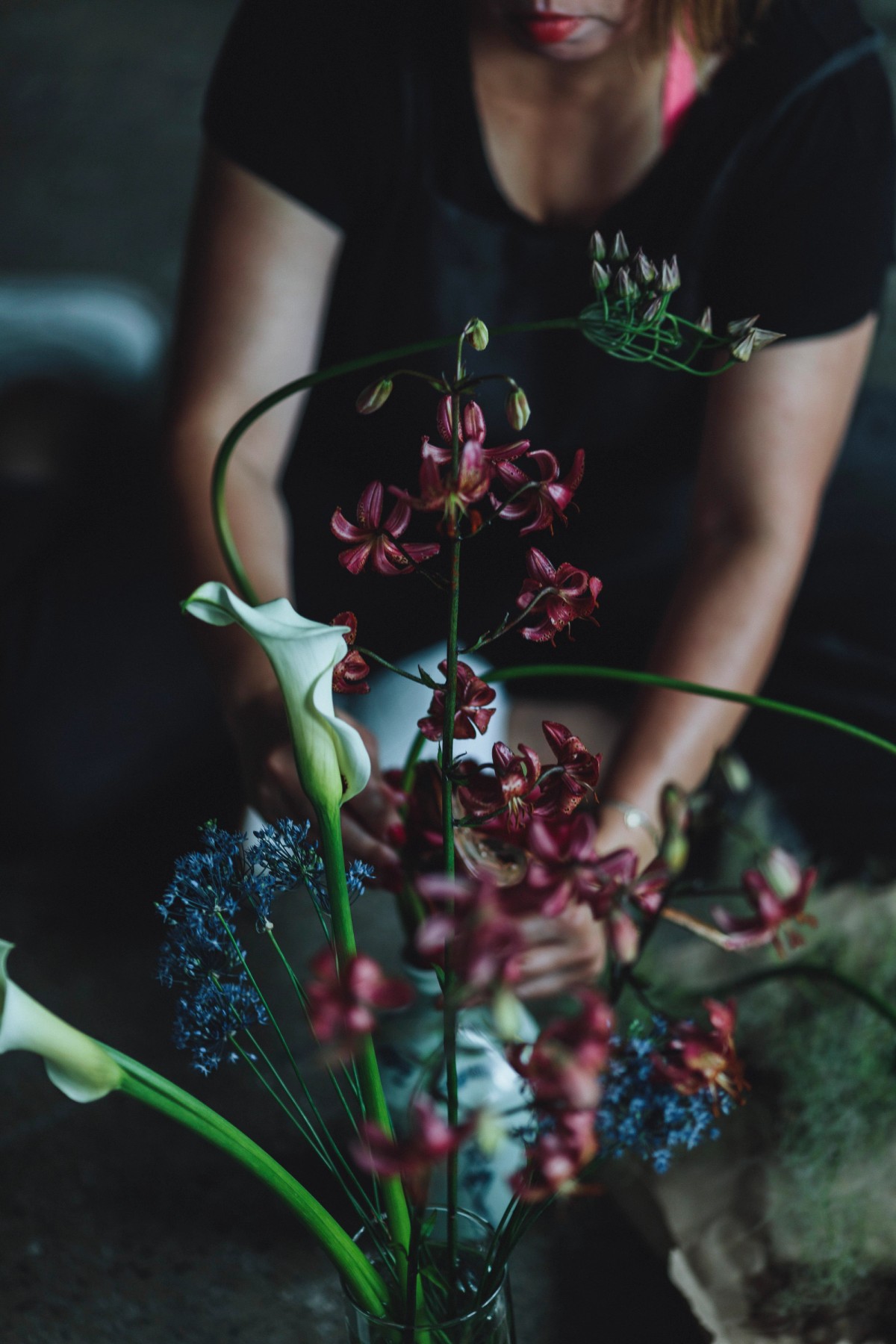
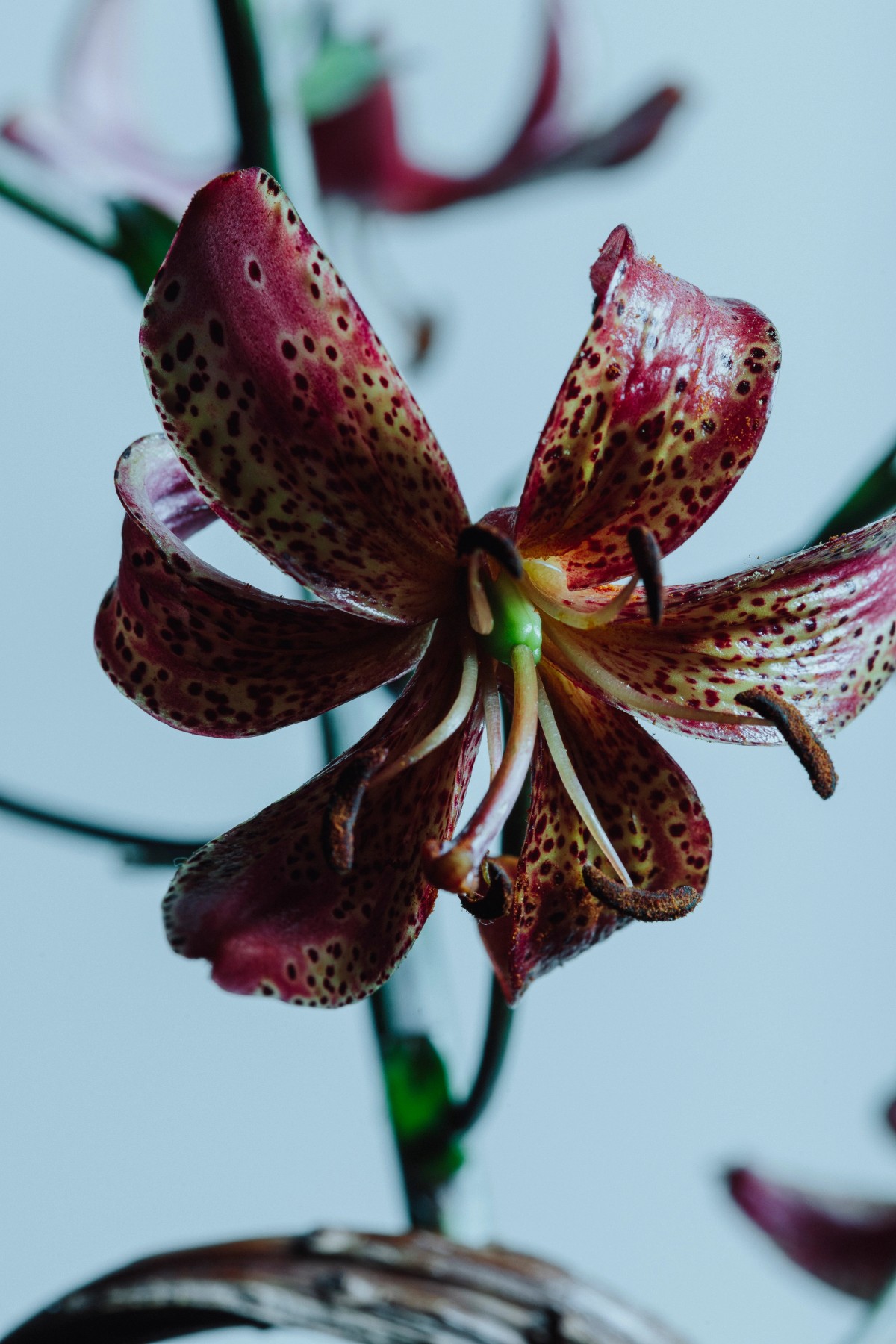
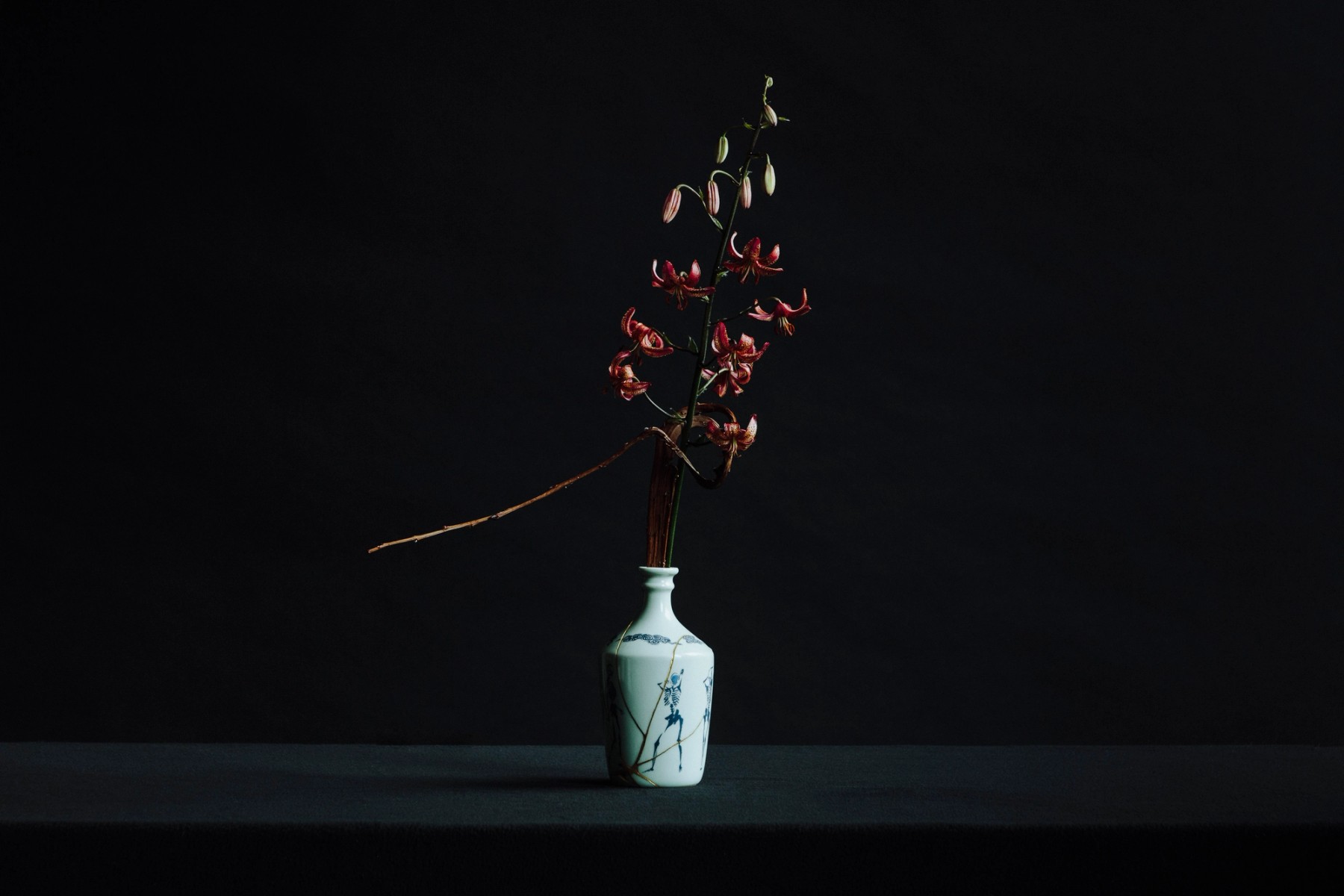
You’ve operated largely outside the traditional gallery system, opting to showcase your works privately. What was the motive behind this? Do you feel the traditional gallery system is outdated?
My intention behind exhibiting independently, mostly outside of the traditional gallery system stems from a desire to have my work remain accessible to the communities that I resonate the most with. Considering space and location as a medium has also influenced where and how I exhibit, by incorporating geography, architecture, natural light and ambient sounds to create multisensory experiences. This approach to “guerilla” exhibitions allows me a high level of freedom to execute a vision under my own terms.
You’ve recently explored digital artwork and animation. How did this come about and was this a natural extension of your physical work?
Thematically, these animated projects are a natural extension of my static works. I felt limited working in traditional mediums at the time, and wanted to expand the boundaries of what I could achieve in terms of developing concepts, moods and narrative. I collaborated closely with a digital artist and sound designer on these pieces which was an illuminating experience, as my practice is generally a solo endeavor.
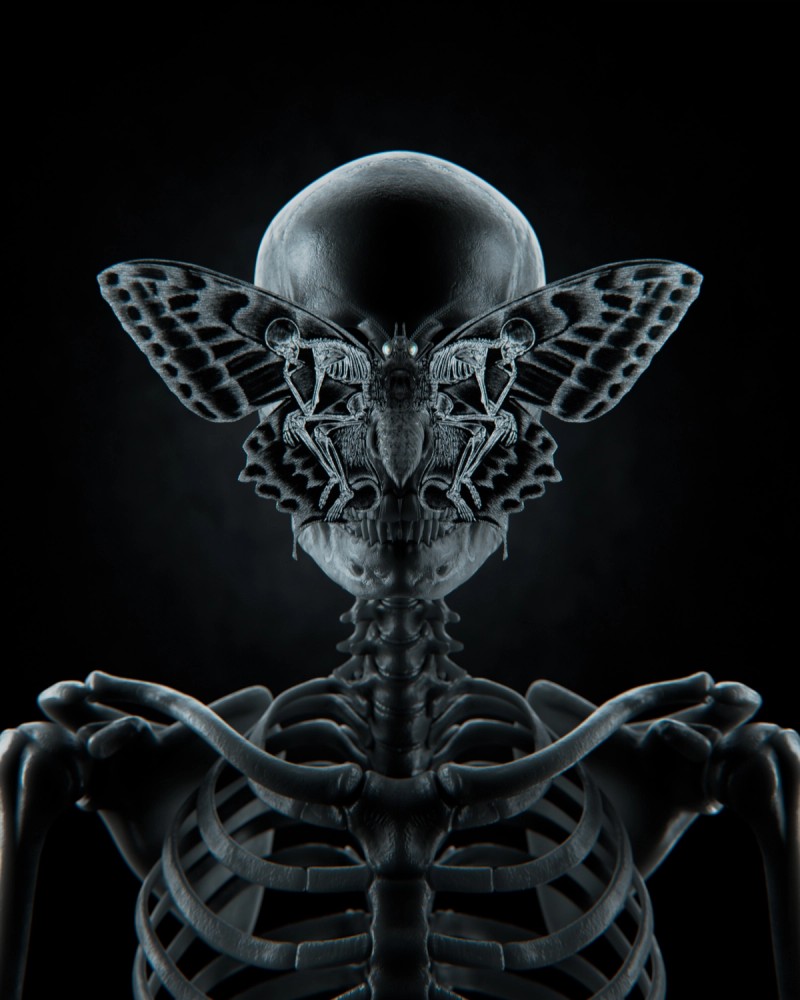


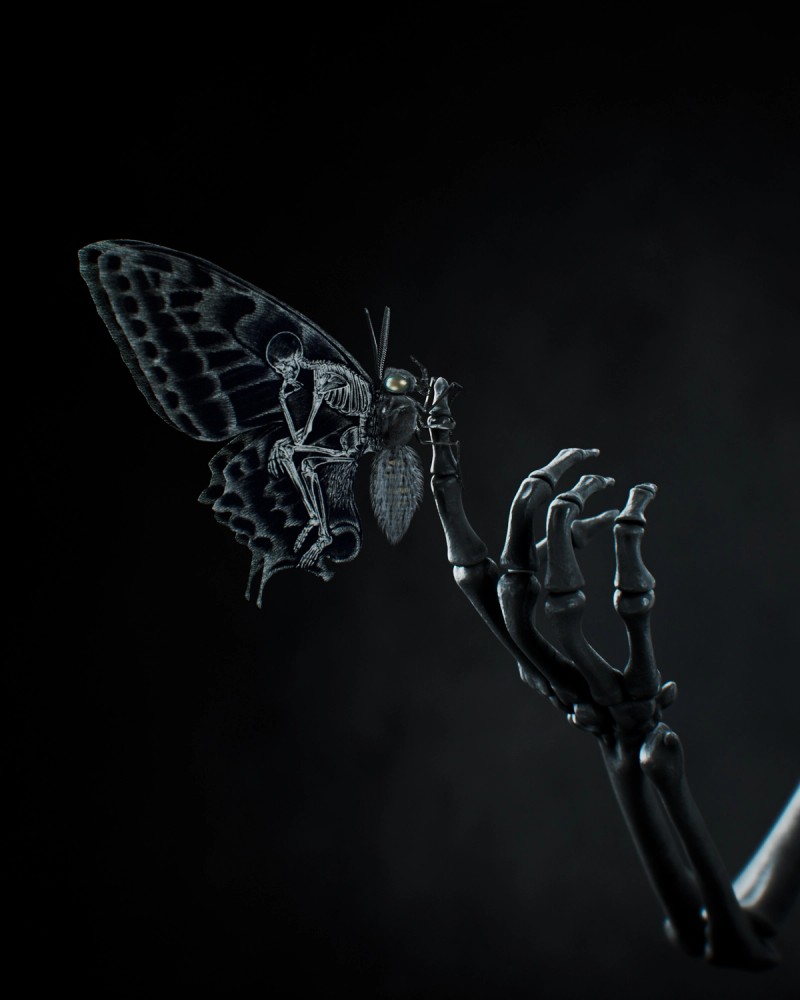

How has your process evolved over time?
My process has become more structured and regimented over the years, but I’m careful not to fall into the traps of hustle culture. As it’s become a full time practice, I’ve had to regulate and allocate my energy more efficiently. Rest has become a key component in my practice and personal life; I enjoy more time away in seclusion between projects, but still maintain a strong work ethic.
Can you share anything about upcoming projects or series?
In this phase of my career as an artist, I’m allocating more energy and focus towards experimentation. Shifting curiosity back into the equation and venturing further out from my comfort zones. In terms of mediums, my practice has become far ranging and my interests quite diverse – this has had a direct impact on the kind of work I’m producing, and I’m looking forward to sharing them in the near future.
